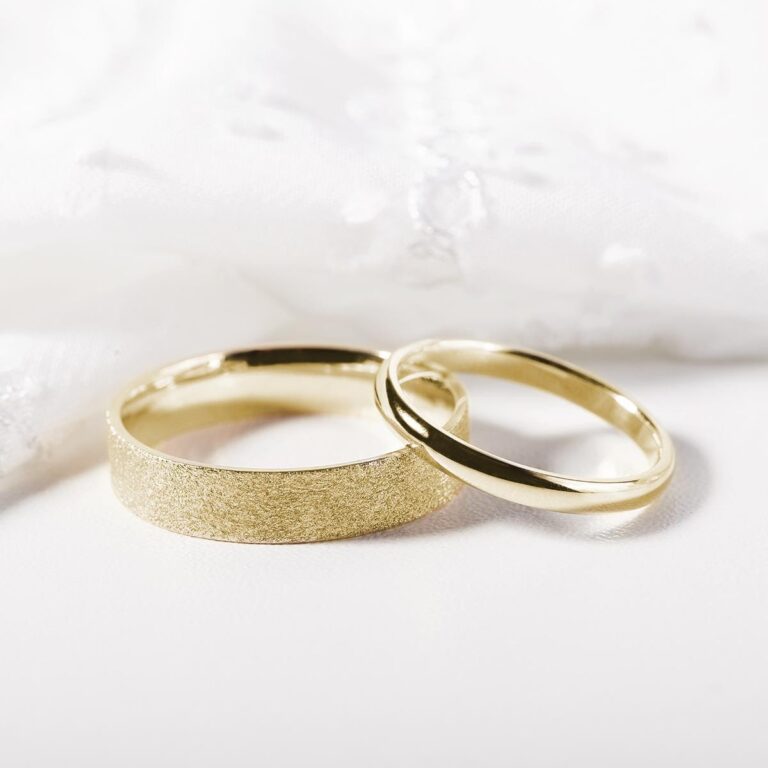The most common metals for jewelry making are gold and silver but both of these materials have different properties which means that you need to consider what you expect from a given piece of jewelry. Wedding rings are meant to be on your finger every day and so they will often be exposed to the possibility of getting damaged. The general recommendation is to therefore choose gold wedding rings. And the reason why gold is more suitable for these than silver will be explained in this article.
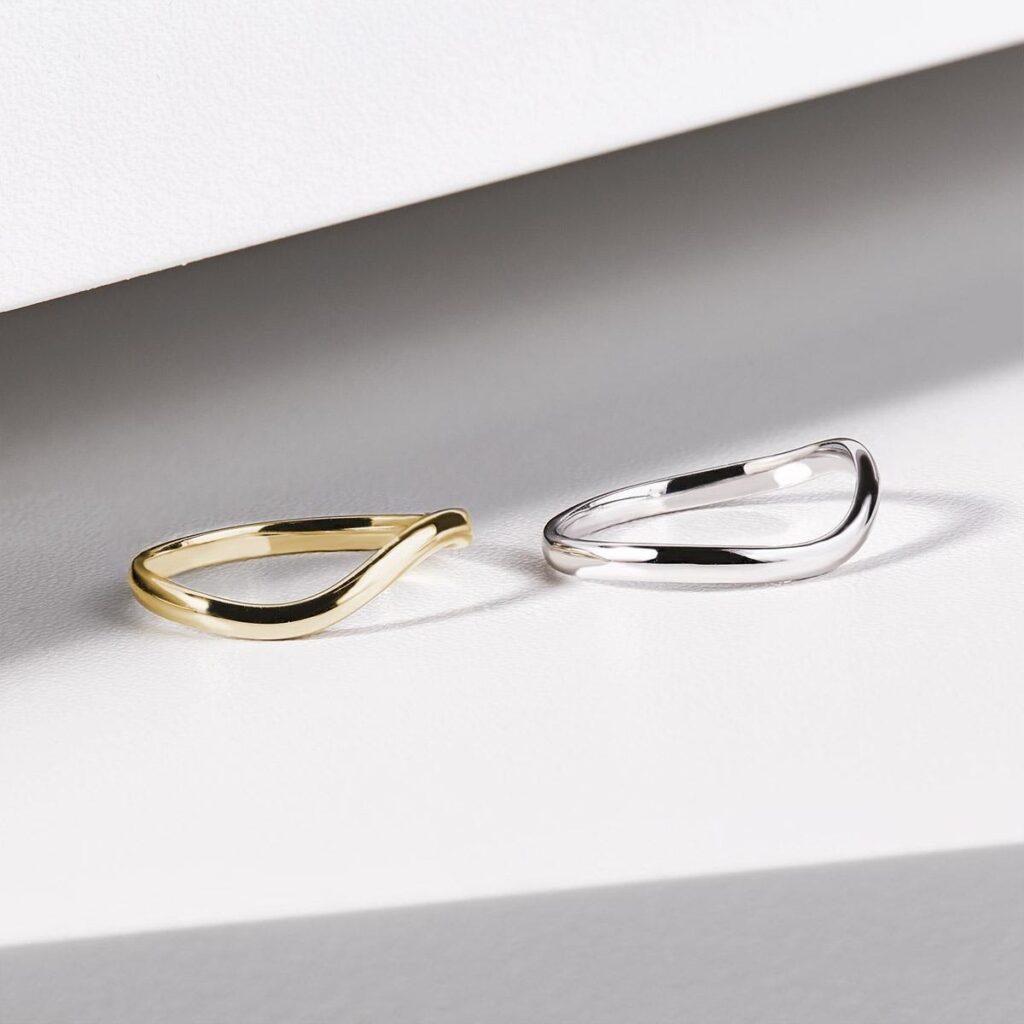
Metals used in jewelry making cannot be pure
First of all, it is good to keep in mind that both of these metals are modified by what is known as alloying, ie. adding other metals, before gold and silver can be used in jewelry making. Alloying gives them certain necessary properties – hardness, malleability or color.
Pure gold is 24 carats and is too soft for jewelry making, so this is why 14 carat or 18 carat gold is used instead. If it is intended to stay naturally yellow in color, copper and silver are usually added to it, while if we want to achieve a white color, it is advisable to add silver or zinc and the secret of how the very modern rose gold color is achieved is hidden in the copper which is added to it.
Pure silver is 92.5% of the overall alloy and the rest is mostly copper. In this instance when alloying silver, we only want to adjust the strength, not the color of the metal. The resulting alloy is called sterling silver. So now that it is clear why we are not referring to pure gold or silver when it comes to jewelry making, we can take a closer look at the differences between the two metals.
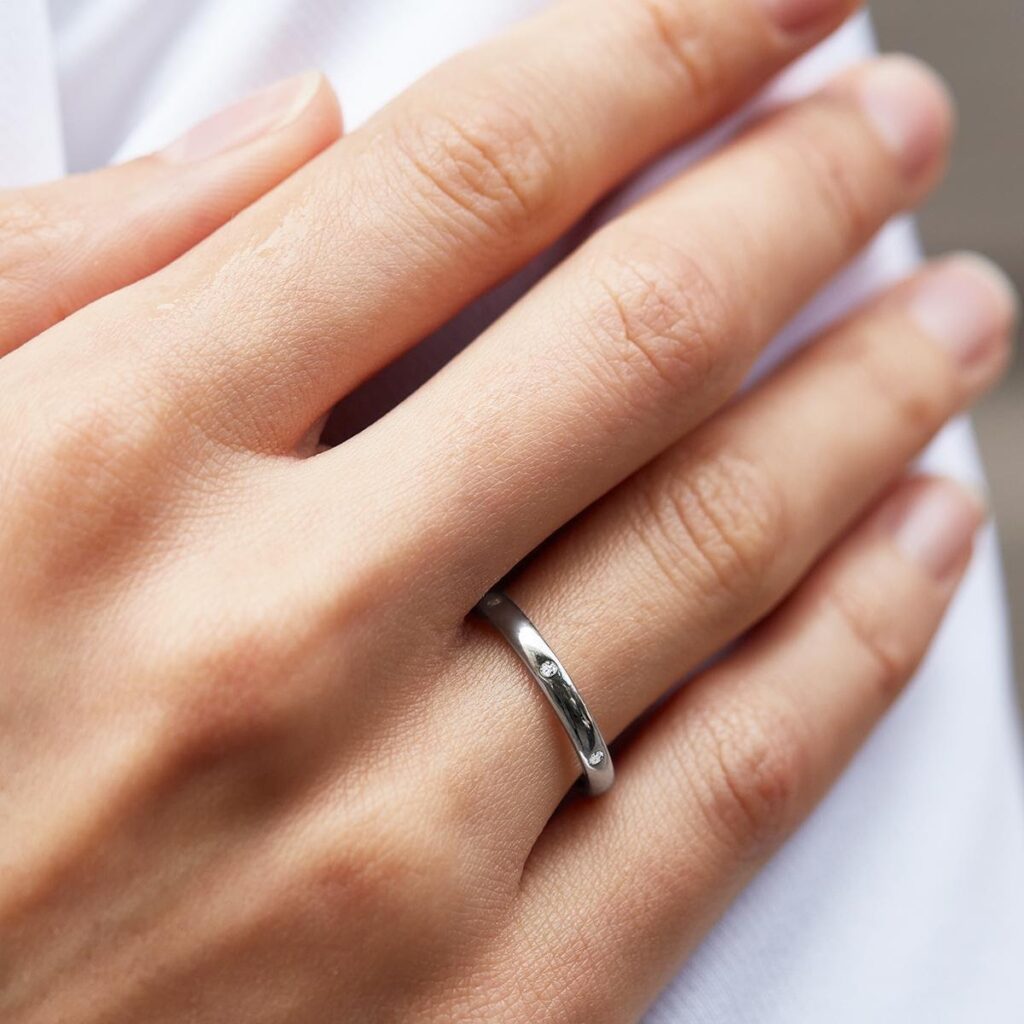
Silver is beautiful, but it cannot compare to gold
Apart from their natural color, which is grayish silver when it comes to silver and golden yellow for gold, there is a significant difference between these materials in their weight. Silver is much lighter because it has a lower density. This also results in one of its disadvantages – its shape distorts more easily and is more prone to damage.
Gold is stronger than silver. It can also be used to create jewelry pieces which are more delicate because it holds its shape better. This quality is also an advantage in everyday wear, where gold jewelry fares much better. And when it comes to wedding rings with diamonds held in place by prongs, there is also less likelihood of one of the prongs breaking off on a gold ring, something which occurs from time to time with silver rings. A stone is thus safer when set in gold. You can find more on Klenota.
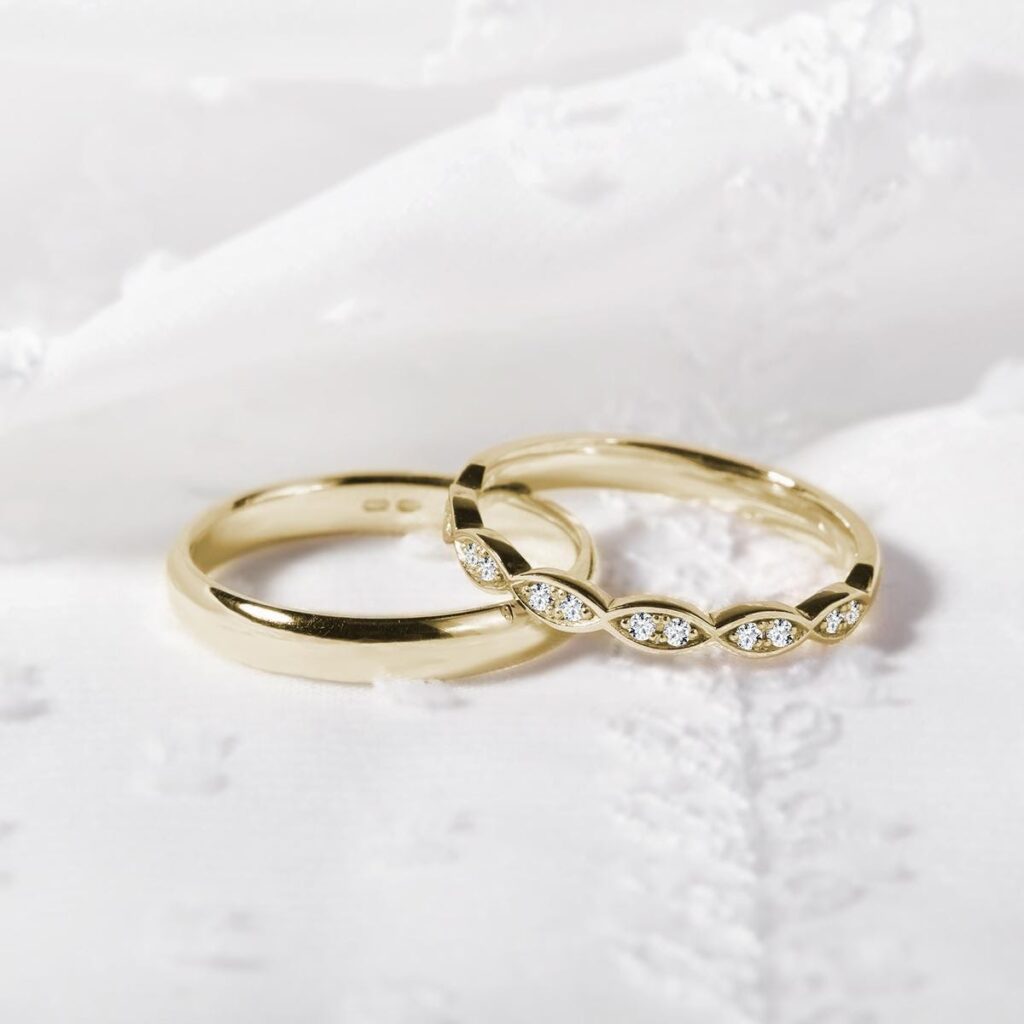
Surface durability is an essential element
The higher overall hardness of gold also has a direct bearing on the toughness of its surface. With silver, traces of wear and tear are noticeable much earlier and for a wedding ring that you no doubt plan to wear for a long time, early signs of wear are definitely undesirable.
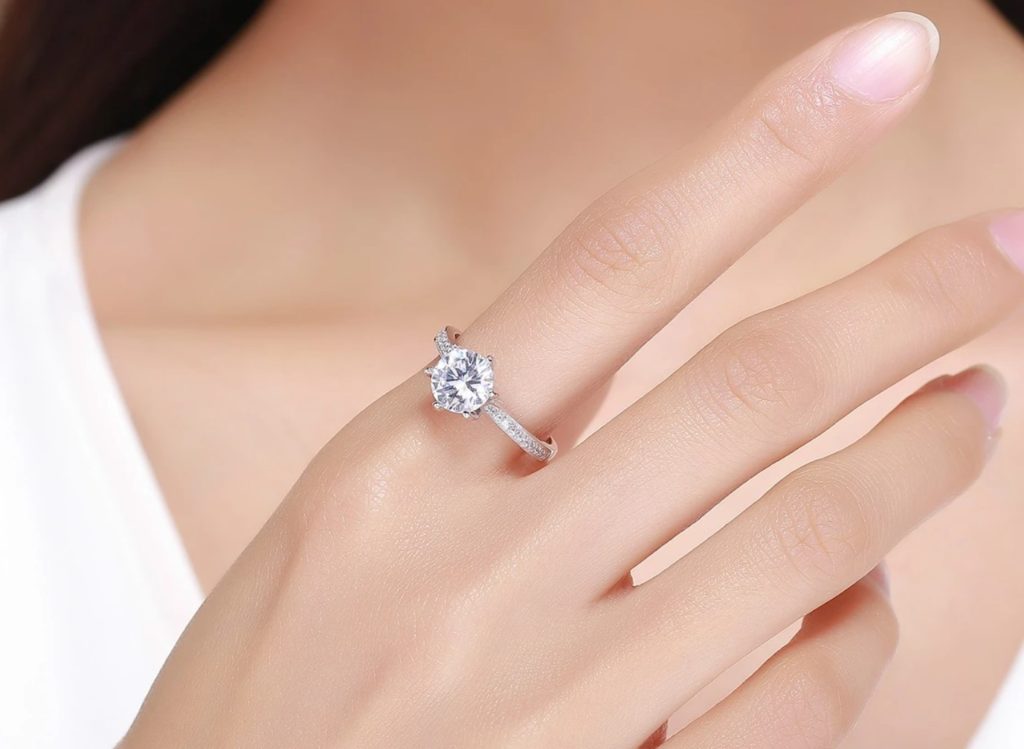
There is no danger of gold oxidizing
To prevent rapid wear, silver is often rhodium plated. Unfortunately, this protective layer will only slow down the process and restoring silver jewelry to its original look is more difficult because the rhodium must be stripped back, the jewelry then needs to be re-polished and then treated with rhodium again. Un-plated gold jewelry simply needs to be cleaned and polished. The layer of rhodium on silver is also supposed to prevent the jewelry from oxidising which causes changes in color as the silver blackens. It is precisely due to the risk of oxidization that silver jewelry is not recommended for long term every day wear.
Gold is chemically stable and therefore does not change color. It could be argued that rhodium plating is also done on white gold wedding rings however in those cases, it is mainly to fine tune the rings to the desired color. Gold blackening is possible only in exceptional circumstances due to illness, drug use or exposure to harmful chemical compounds. Apart from this, the jewelry might at most yellow with age in color which, however, may not be such a bad thing.
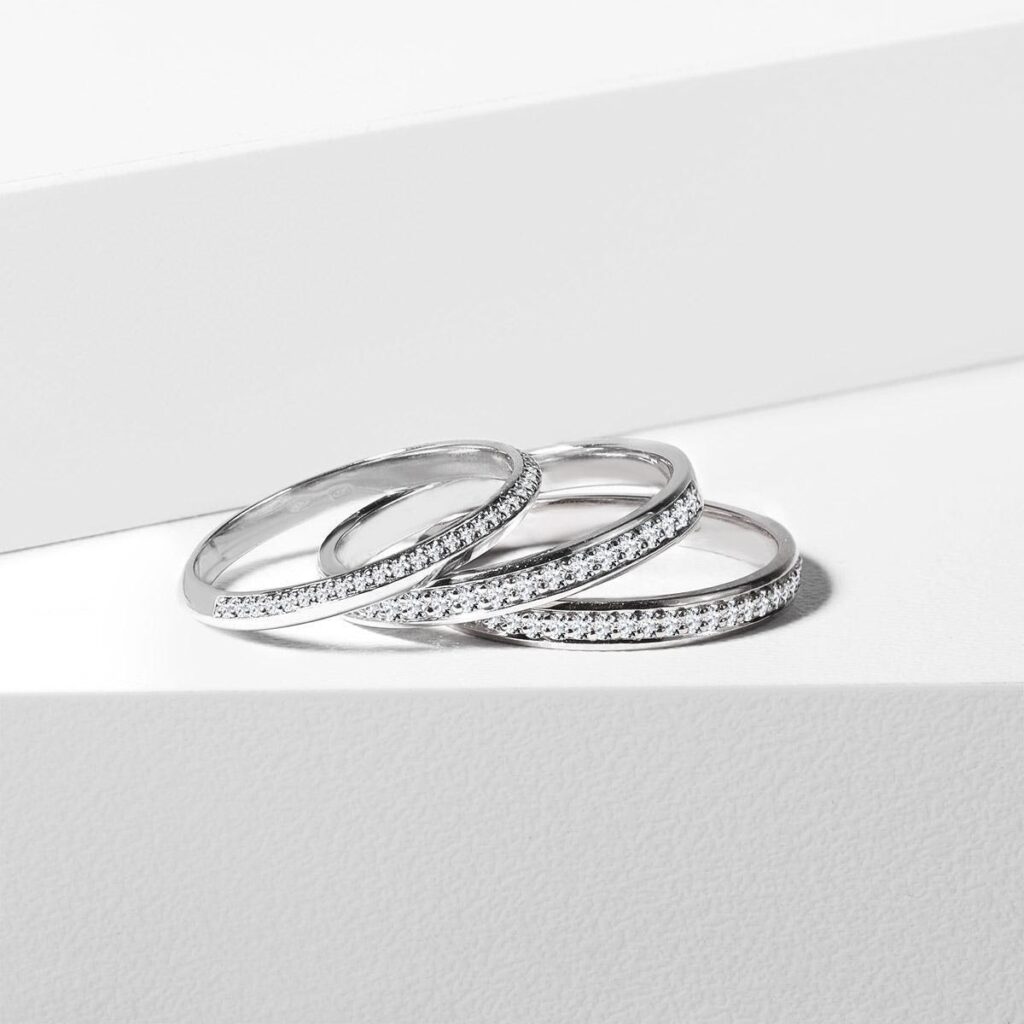
Gold is the clear winner for every day, long term wear
So let’s summarize the fundamental reasons for choosing a gold wedding ring. The essentials are strength, hardness and versatility in the way this metal can be processed. Another advantage is the durability of its surface, which means that you won’t have significant signs of wear on your ring. And no less important is the color fastness of gold.
It is these arguments that convince couples time and time again that investing in gold will pay off for a lifetime.

